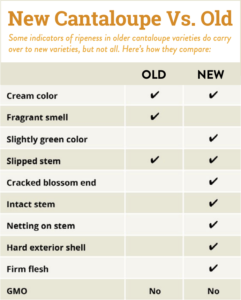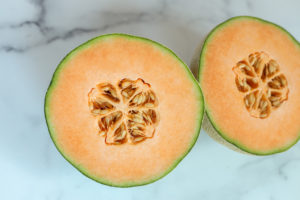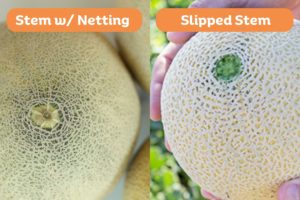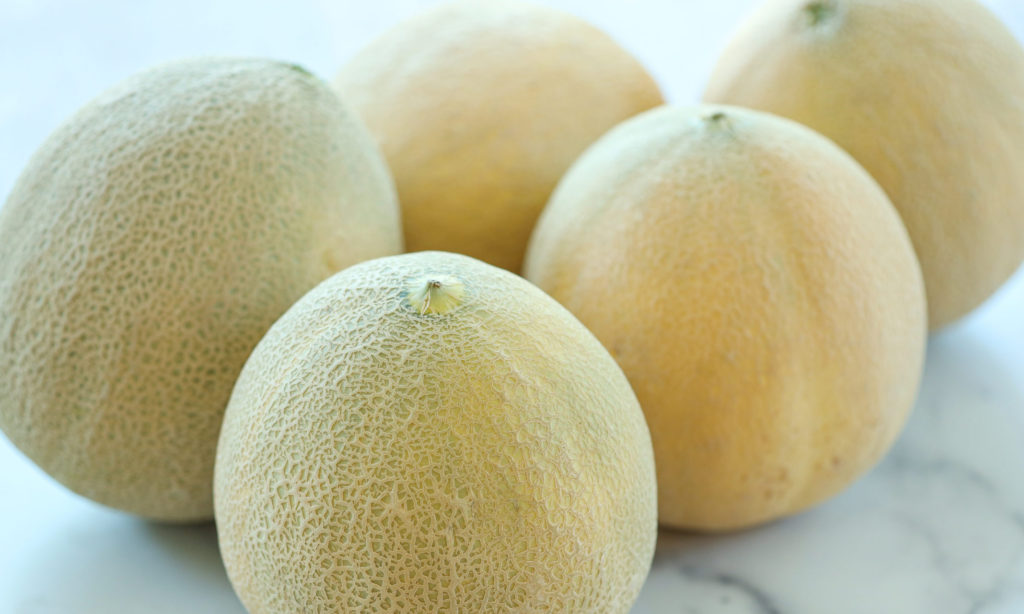New Season, New Cantaloupe – Here’s What to Look For!
The 2023 California Cantaloupe season is here and so are new cantaloupe varieties! Plant breeders have been focusing on creating new non-GMO cantaloupes with a longer shelf life that minimizes food waste, all while keeping the delightful taste of traditional cantaloupes we all love!
Starting Memorial Day weekend you can expect to see these new varieties from California in stores. When at your local market grabbing cantaloupe for your weekend BBQ, California cantaloupe farmers want to make sure you have the facts about how to select these new varieties, because things are a bit different than they used to be.
The good news is that, actually – it’s a bit easier to select a ripe melon. No more thumping, smelling or checking for “slipped” stems as an indication of ripeness.

All you need to know is that these new LSL (Long Shelf Life) or ESL (Extended Shelf Life) cantaloupe varieties have been developed to last longer on the store shelf and in your refrigerator! Even more importantly, because they last longer, they are helping us reduce food waste.
New Key Indicators of Ripeness:
Traditionally, we were all told to look for sweet smelling cantaloupes that had a creamy color and the absence of a stem. Older California grown varieties, such as the commonly known Western Shipper, had a sweeter fragrance because of the release of ethylene gas throughout their ripening process. A sweet scent is no longer an indicator of ripeness with newer varieties. In fact, these new melons are bred to not release ethylene in an effort to slow the ripening process.
Using traditional cross–pollination breeding techniques, these new cantaloupes have a high sugar content, a harder exterior shell, firmer flesh and it’s not usual for them to have a bit of a stem still attached.
Color – green is okay
When it comes to visually inspecting cantaloupe, we were once told to always look for a cream-colored shell. Although that is still a great color for a California cantaloupe, it isn’t necessary. New varieties of cantaloupe can be greener in color, but they’ve been bred to have higher sugar content, so they’ll still have that same great taste! Takeaway – don’t shy away from a slight green hue.

Stem – don’t overthink it
In the past, older cantaloupe varieties would naturally separate from the stem when reaching peak maturity in the field. This is why a smooth end without any stem was considered ideal. However, with new cantaloupe varieties, the stem may be gone but it’s also just as common for the fruit to retain a bit of stem when at peak ripeness. A mature cantaloupe may also have a bit of “netting” that has grown up the stem as shown in the photo below.

Blossom’s End – slight cracking and softness is key
Today’s cantaloupe varieties often have characteristics that can be perceived as defects, but are actually indications of ripeness. If the blossom end (the opposite end of the stem) has slight cracking, it’s actually a sign that you have a sweet melon in your hands. Another key feature is to check at the blossom’s end for a slight give to gentle pressure.
Confidence in Quality
While, yes these new cantaloupe varieties are a bit different, we are confident that you’ll have the same great tasting experience! All California Cantaloupes are grown in a sustainable manner with constant improvements in taste and quality.
California-grown cantaloupes are subject to strict standards before making their way to the store. One of these requirements is that before they can harvest, growers must wait for cantaloupe to have a minimum sugar level of 12 brix. This ensures you receive a sweet-tasting cantaloupe.
Additionally, California has stringent food safety standards that cantaloupe growers are required to follow under a mandatory food safety program that invites government auditors to inspect all aspects of cantaloupe production from growing, to packing and cold storage.
The California Cantaloupe Advisory Board, and its farmers and packers are continuously on the forefront of innovating melons that taste great, are sustainable and are produced with quality and safety in mind.
We look forward to celebrating California Cantaloupe season together and bringing you everything cantaloupe!








